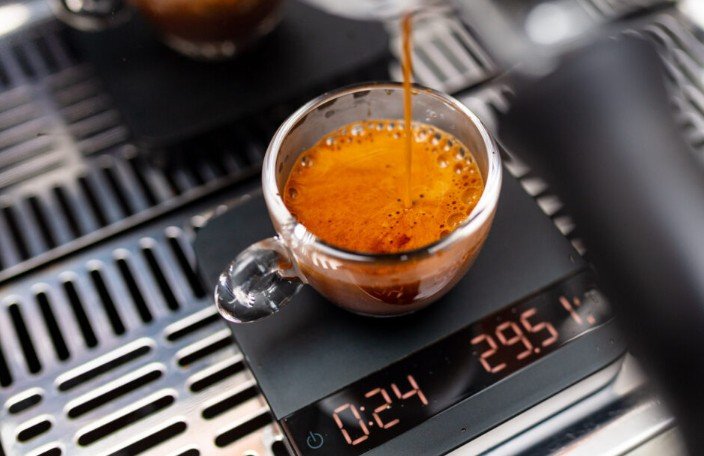If you’re curious about what goes into a perfect shot of espresso you’re not alone. Knowing how much coffee is used can help you understand the strength and flavor of your favorite espresso-based drinks. Whether you’re brewing at home or ordering at a café it’s useful to grasp the basics behind that small but powerful shot.
Espresso isn’t just about quantity it’s about precision. The amount of coffee grounds packed into the portafilter directly affects the taste and intensity. Getting this right ensures you get a rich bold shot every time without bitterness or weakness. Let’s dive into how much coffee you’ll typically find in a shot of espresso and why it matters for your daily caffeine fix.
Understanding Espresso Shots
Espresso shots represent the foundation of many coffee beverages. Knowing their key characteristics helps you appreciate how they impact flavor and strength.
What Defines a Shot of Espresso?
A shot of espresso comes from forcing hot water through finely ground coffee under high pressure. This process extracts oils, acids, and caffeine quickly, producing a concentrated, bold flavor. You measure a shot by the amount of liquid espresso extracted, not just the coffee used. A single shot involves about 7 to 9 grams of coffee grounds, with the exact amount varying by espresso style and coffee blend. Precision in grind size, dose, and tamp pressure affects the shot’s quality, ensuring a balanced taste.
Typical Volume of an Espresso Shot
A standard single espresso shot yields approximately 1 ounce (30 ml) of liquid. If you prefer a double shot, expect around 2 ounces (60 ml), which uses nearly double the coffee amount, roughly 14 to 18 grams. The volume depends on extraction time, typically between 25 and 30 seconds, to maintain optimal flavor without over-extraction that leads to bitterness. Controlling the volume and coffee dose directly influences the shot’s intensity and mouthfeel.
How Much Coffee Is Used for a Shot of Espresso?
Understanding the exact amount of coffee used in a shot of espresso helps you control its strength and flavor. The coffee dose directly affects the espresso’s richness and balance.
Standard Coffee Dose for a Single Shot
A single espresso shot uses 7 to 9 grams of finely ground coffee. This range produces about 1 ounce (30 ml) of liquid espresso, extracted under 9 bars of pressure in 25 to 30 seconds. Using between 7.5 and 8.5 grams is common in many espresso recipes to ensure a flavorful, concentrated shot without bitterness or weakness.
Factors Influencing Coffee Amount
Grind size, coffee blend, and machine settings influence the precise coffee dose for your shot. Finer grinds may require less coffee but longer extraction time. Darker roasts often need a slightly lower dose to prevent over-extraction, while lighter roasts benefit from a higher dose to extract sufficient flavor. Your espresso machine’s portafilter basket size also limits the maximum coffee amount you can use. Adjusting these factors helps you tailor the espresso intensity and consistency to your preference.
Impact of Coffee Quantity on Flavor and Strength
Coffee quantity in a shot of espresso directly shapes its flavor profile and strength. Precise measurement ensures the balance between boldness and smoothness.
How Coffee Dose Affects Taste
Increasing coffee dose amplifies espresso’s body and intensity, producing richer, more concentrated flavors. Decreasing the dose results in lighter taste and less bitterness but may weaken the overall flavor. Overdosing risks over-extraction, causing harsh, burnt notes. Underdosing can lead to under-extraction, yielding sour or thin flavors. Maintaining 7 to 9 grams for a single shot optimizes extraction time and flavor complexity.
Adjusting Coffee Amount for Different Preferences
Larger dosages suit those who favor robust, full-bodied espresso, while smaller amounts work for milder, smoother options. You can fine-tune the coffee dose based on the roast level and grind size; darker roasts often need less coffee to avoid bitterness, and lighter roasts benefit from more grounds to enhance flavor extraction. Portafilter basket size limits the maximum amount, requiring adjustments within 7 to 18 grams depending on single or double shots.
Measuring Coffee for the Perfect Espresso Shot
Accurate measurement of coffee grounds ensures consistent espresso shots. Precision in dose directly affects flavor, strength, and extraction quality.
Using Scales vs. Scoop Measurements
Using a digital scale provides exact coffee weight, typically 7 to 9 grams for a single shot. Scales eliminate guesswork, reducing variability caused by grind size or tamp pressure. Scoops measure volume, but coffee density varies by grind and roast, leading to inconsistent dosing. If using a scoop, choose one calibrated for espresso and level it off each time. However, scales remain the preferred method for precise, repeatable results essential in espresso preparation.
Tips for Consistency in Coffee Dose
Weigh coffee before each shot to maintain dose within 0.1 gram variance. Use the same grind size and tamp pressure every time to complement your measured dose. Calibrate your grinder regularly to ensure uniform particle size. Clean your portafilter and basket after each shot to avoid residue buildup that affects coffee volume. Track dose and yield ratios to adjust extraction balance, keeping shots between 25 and 30 seconds for optimal flavor. These practices secure a consistent coffee dose, producing rich and balanced espresso every time.
Conclusion
Knowing the right amount of coffee for your espresso shot gives you control over every cup you make. By focusing on precision and consistency, you can unlock the full potential of your coffee beans and create espresso with the perfect balance of strength and flavor.
Whether you prefer a bold, intense shot or a smoother, lighter one, understanding your coffee dose helps you tailor each extraction to your taste. Using a scale and maintaining consistent grind and tamp pressure ensures you get that rich, satisfying espresso every time you pull a shot.

